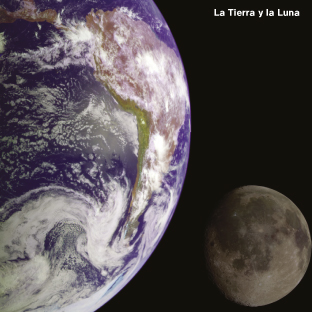
Haz clic aquí para descargarte un PDF con información fascinante sobre la luna, incluyendo algunas imágenes fabulosas

Haz clic aquí para descargarte un PDF con información fascinante sobre la luna, incluyendo algunas imágenes fabulosas
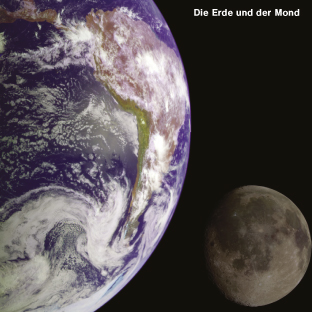
Klicke hier, um ein PDF-Dokument herunterzuladen, das faszinierende Informationen über den Mond sowie einige atemberaubende Bilder enthält.
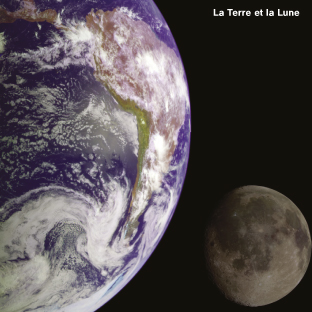
Clique ici pour télécharger un document PDF révélant des informations fascinantes sur la lune, y compris des images étonnantes.
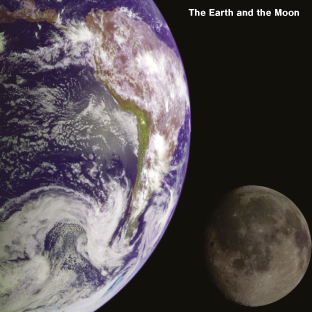
The Moon
The Moon is a 4.5-billion-year-old ball of rock in space and is Earth’s only natural satellite. A satellite is something which revolves around a planet. This can be a natural satellite, such as the Moon, or a man-made satellite placed into orbit for research or communications.
How the Moon Formed
The most likely theory about how the Moon was formed is called the Giant Impact Hypothesis. It is thought that, 4.5 billion years ago, a planet the size of Mars collided with the Earth. This impact caused huge amounts of liquid rock to be thrown into space and this debris gathered together to form the Moon. The newly formed Moon settled into an orbit just 22,500km (14,000 miles) away from the Earth, which was the closest it could have been without Earth’s gravity pulling it back again.
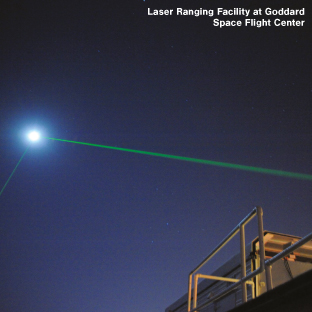
The Moon is now, on average, 384,467km (238,897 miles) away from Earth. It revolves around Earth on an elliptical or oval shaped orbit, so sometimes it is nearer to the Earth and sometimes farther away. We know the distance to the Moon exactly because special reflectors were left on the Moon’s surface by the astronauts of the Apollo missions. Astronomers bounce laser beams off these reflectors and, because they know the speed at which the light of these laser beams travels, they can calculate the distance by the length of time it takes for the beam to get to the Moon and back.
The Moon is slowly moving away from Earth at a rate of 3.78cm (1.5 inches) per year. If the Moon moved far enough away this would have a catastrophic effect on the Earth’s climate. However, the Moon is moving so slowly that it would be billions of years before this happened.
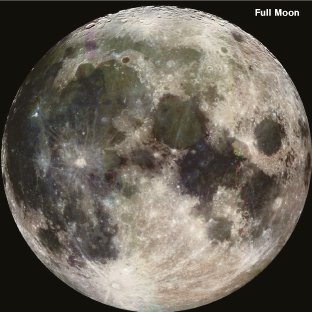
Size of the Moon
The Moon has a diameter of 3,476km (2,159 miles) which is about a quarter of the size of the Earth. The volume of the Moon is about 49 times less than Earth, which means you could fit 49 Moons inside the Earth.
Speed
The Moon orbits the Earth at a speed of 3,683km/h (2,288mph). In one complete orbit around the Earth it travels 2,290,000 km (1,423,000 miles).
Atmosphere
There is no air on the Moon as its gravity is too weak to have an atmosphere and because of this the sky always appears black. Sound travels through air, so as the Moon has no air, it is always silent. With no atmosphere to trap heat, the Moon’s temperature varies from very hot 123°C (253°F) to very cold -233°C (-387°F).
Tides
On Earth our oceans have tides and these occur because of the gravitational pull between the Earth and the Moon. The highest or Spring Tides occur during a Full or New Moon. The lowest or Neap Tides occur at the Quarter Moons.
The Far Side
From Earth we always see the same side of the Moon. This is because, as the Moon rotates around the Earth, it also rotates around its own axis at the same rate. The side that we do not see is called the Far Side or Dark Side of the Moon. It has more craters than the front of the Moon and does not have as many maria. The Far Side was first photographed by the Soviet spacecraft Luna 3.
Moon Light
The Moon does not make its own light but reflects the light from the Sun. When we see the Moon lit up in the sky it is actually the light from the Sun hitting the Moon and bouncing back to Earth. The Moon’s surface absorbs more than 90% of the Sun’s light, with only a small percentage reaching Earth.
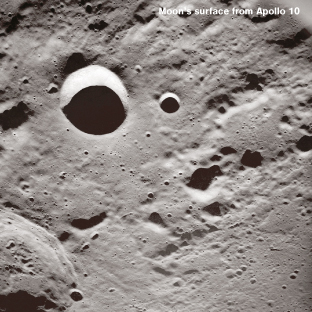
A meteoroid is a small piece of debris in space. If a meteoroid enters Earth’s atmosphere it is called a meteor and if it reaches the ground it is called a meteorite. Most meteors burn up as they pass through Earth’s atmosphere and before they hit the ground. As the Moon has no atmosphere it is constantly bombarded by meteorites and so is covered in impact craters, some billions of years old. There is no wind or rain to wear away these craters, so the landscape does not change a great deal. The footprints of the astronauts who landed on the Moon in the 1960’s and 70’s are still there today.
One such impact crater is Tycho, named after the Danish astronomer Tycho Brahe. Tycho is a young crater, with an estimated age of only 108 million years. The crater is surrounded by distinctive long spokes that are up to 1,500km (932 miles) long and is visible from Earth.
The dark patches are plains formed by lava flows very early in the history of the Moon. They are called mare or plural maria, which is Latin for sea, because early astronomers thought these dark areas were filled with water.
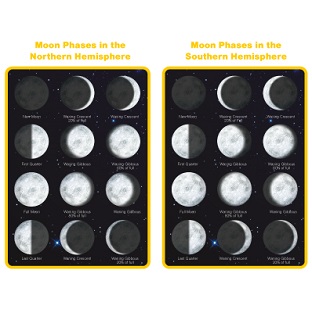
From Earth, we see the Moon appear to change shape throughout the month, from a crescent to a Full Moon and back again. What we are seeing is part of the Moon illuminated by the Sun, depending on the position of the Earth, Moon and Sun in the sky. This is called a phase of the Moon.
The Moon orbits the Earth near to the Equator, so people in different hemispheres see the moon from a different vantage point. People in the Northern Hemisphere are standing on the opposite side of the globe to the people in the Southern Hemisphere, so in effect we are upside down to each other! So, a person from one hemisphere will think the Moon looks upside down if they go to the other hemisphere. Likewise, the way we view the Moon phases is different in each hemisphere, as shown on the charts above.
When the Moon is between the Earth and the Sun the side of the Moon facing us is dark and this is called a New Moon. After the New Moon the Moon is said to be waxing, or gaining in strength or brightness. When the Moon is on the opposite side of the Earth to the Sun, the side of the Moon that we see is fully lit up and this is a Full Moon. After the Full Moon the Moon is said to be waning, or decreasing in strength or brightness. The time that the Moon takes to complete its full cycle from New Moon to New Moon is about 29.5 days or a lunar month.
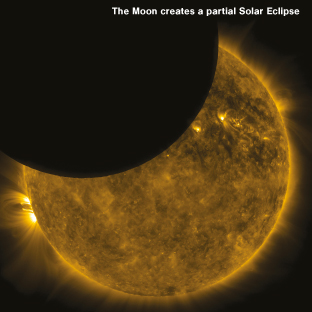
Lunar Eclipse
An eclipse happens when one object in outer space is temporarily hidden by another object. When the Earth comes exactly in between the Sun and the Moon, the Earth blocks the sunlight from the Moon and we see a lunar eclipse. This can be a partial or total eclipse. An eclipse can last for over an hour and only happens during a Full Moon.
Solar Eclipse
By a bizarre galactic coincidence, the Moon and the Sun appear to be almost exactly the same size in the sky from Earth. The Sun is about 400 times further away from the Earth than the Moon but the Sun’s diameter is about 400 times bigger than the Moon. This phenomenon allows us to see a solar eclipse from Earth. A solar eclipse happens when the Moon passes between the Sun and the Earth and the Moon totally or partially covers the Sun. This can only happen at a New Moon and can only be viewed at certain places on Earth where the darkest part of the Moon’s shadow, or umbra, falls
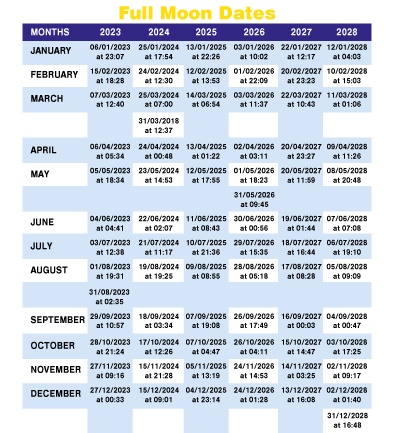
Since ancient times people have used the phases of the Moon to judge the passing of time and the word month derives from the word Moon.
However, as a lunar month is 29.5 days and a solar year, the time it takes the Earth to go around the Sun, is 365 days, many countries use an adapted calendar to match up the lunar months with the solar year. An example of this is the Gregorian calendar, which changes the number of days in each month to make 365 days in total. Lunar-solar calendars, such as the Chinese, Hebrew or Hindu calendars, have a variable number of months in a year to bring the lunar and solar cycles together. The only purely lunar calendar in common use is the Islamic calendar, where each year is exactly 12 lunar months. This calendar is not linked to the seasons and each year it moves away from the solar year by 11 to 12 days, coming back into position every 33 Islamic years.
Below is a list of Full Moon dates. Use this list and the Moon phases chart above to set your moon to look like the Moon outside. The time given for each Full Moon is UTC or Coordinated Universal Time. This is only fractions of a second different to Greenwich Mean Time. Adjust the time of each Full Moon to match your time zone.
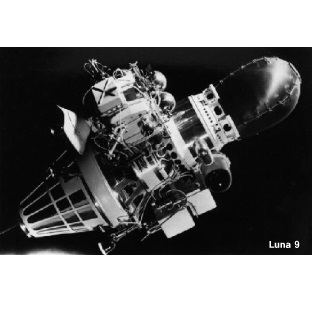
Studying the Moon
Early man was fascinated by the Moon and ancient temples and stone circles were built to line up with the Moon and the Sun at certain times of the year. In 1609 Galileo Galilei was the first person to use the recently invented telescope to study the Moon. The first photograph of the Moon was taken in 1839 by John Draper, shortly after the invention of photography.
Exploration of the Moon
The first spacecraft to pass near the Moon was the unmanned Soviet Luna 1. Luna 2 crashed onto the Moon’s surface and Luna 3 was the first spacecraft to photograph the Far Side of the Moon. This was all in 1959. In 1961 the Russian Yuri Gagarin became the first human to travel into outer space in his spacecraft Vostok 3KA-3. In 1966 the unmanned Soviet Luna 9 made a successful soft landing on the Moon.
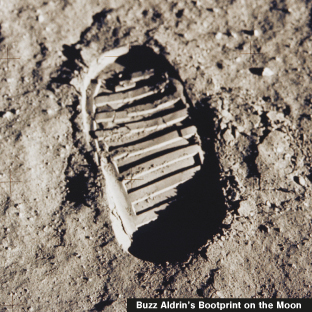
The Apollo Programme
In 1968 the US Apollo 8 made the first manned orbit of the Moon. The Lunar Module on Apollo 10 got to within 15km (50,000 feet) of the Moon’s surface but did not land.
Finally, in July 1969 Apollo 11 Commander Neil Armstrong became the first man to set foot on the Moon, with the famous words “That’s one small step for man, one giant leap for mankind.” He was closely followed by Buzz Aldrin. They remained on the Moon for 21 hours and collected specimens to bring back to Earth for study.
On each manned Apollo mission, there were three astronauts, the Commander, the Lunar Module Pilot and the Command Module Pilot. The Commander was in charge of the mission and was the main pilot of both spacecraft. He would also be the first to step out of the Lunar Module onto the surface of the Moon. The Lunar Module Pilot was the engineer and accompanied the Commander to the Moon’s surface. The Command Module Pilot acted as the navigator and remained in the Command Module whilst his fellow astronauts landed on the Moon’s surface. In the Apollo 11 mission this role was carried out by Michael Collins.
The five missions Apollo 12 and 14 to 17 all successfully landed on the Moon. In 1972 Apollo 17 was the last Apollo mission to the Moon.
Apollo 13
The Apollo 13 mission was supposed to land on the Moon. The spacecraft was successfully launched but when it was 320,000km (200,000 miles) from Earth the number 2 oxygen tank exploded. This seriously damaged the electrical system and meant that the spacecraft could not return to Earth in the normal manner. The crew on the spacecraft and at mission control had to come up with a very clever plan, using the Moon’s gravity to return the craft to Earth. Watched by millions on TV, the crew landed safely home.